
Layout of 120 MW Thermal Power Plant Download Scientific Diagram
Introduction Recent events have caused modern society to appreciate anew the benefits it derives from electricity. A wide-ranging massive power outage extending from the northeastern United States to Canada and a power failure throughout all of Italy have occurred, and have had large impacts on the life of residents in those areas.
.jpg)
Conventional Sources of Energy Definition, Types, Examples Teachoo
Layout of a typical thermal power plant: The thermal power station layout is given in the figure. The main components of a thermal power station are a boiler, turbine, generator and cooling tower. The function of each component is as follows: - Boiler: The purpose of the boiler is to convert water into high-pressure steam.

Introduction to thermal power plant
The thermal power plant, also known as a thermal power station, is used to convert heat energy into electricity for residential and commercial usage. Steam-operated turbines turn heat into mechanical power, which is then converted into electric power in the electric power production process.
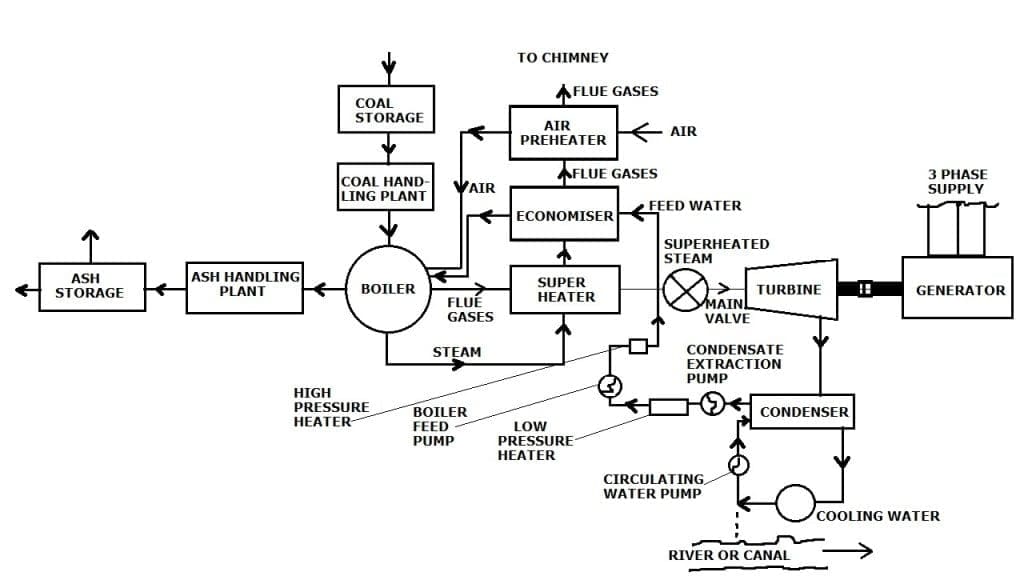
Thermal Power Plant Definition, Layout, Working, Site Selection, Advantages, Disadvantages
Thermal power plant also called thermal power station or steam power plant is used to generate electricity. How electricity is generated in thermal power plant? In thermal power plants, the heat energy obtained from the combustion of fuel (coal/natural gas/other carbon base fuel) is used to convert water into steam.
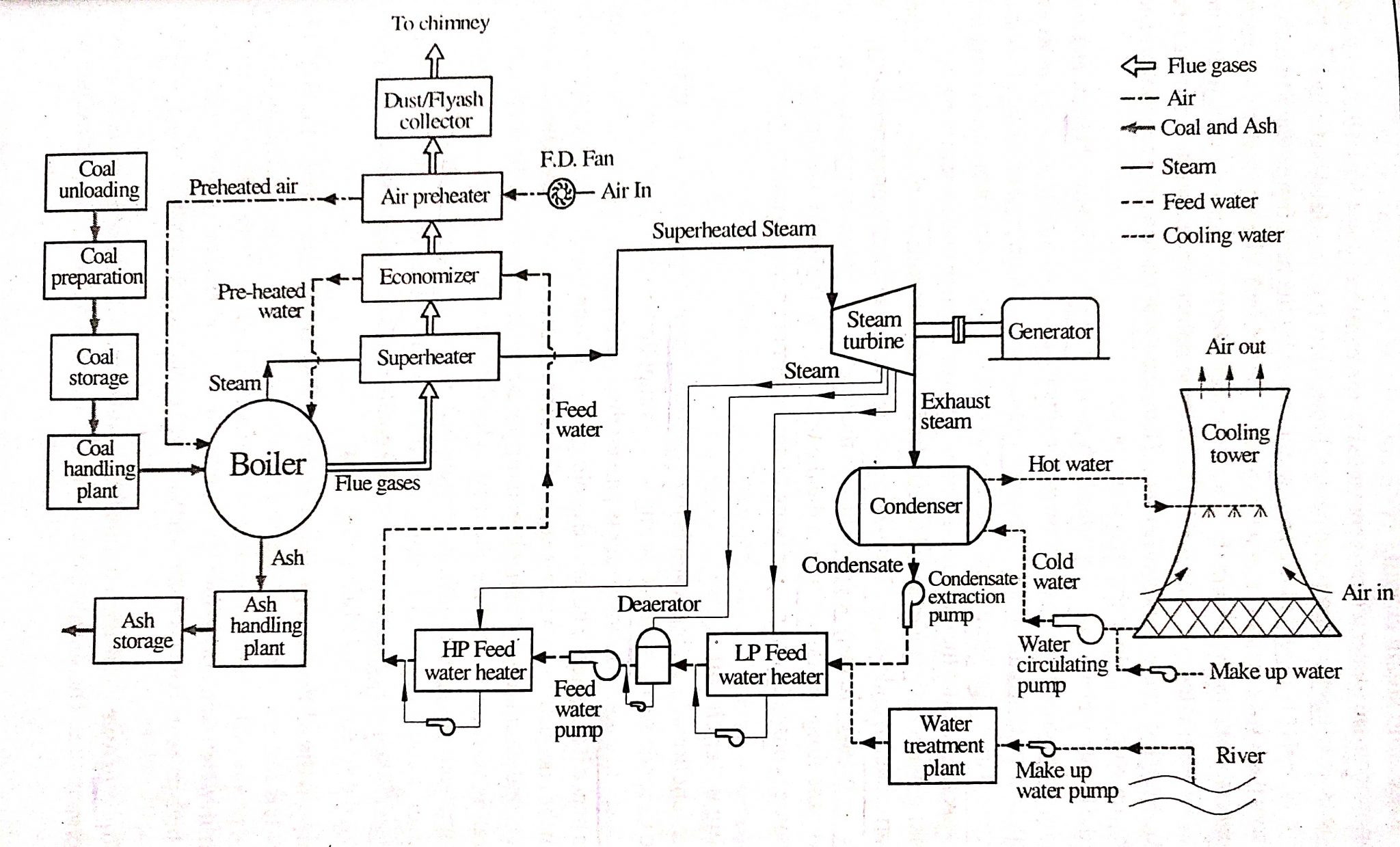
General Diagram Thermal Power Plant, Main Components Melezy
A thermal power plant, also known as a thermal power station, is used to transform heat energy into electric power for domestic and industrial applications. Electric power is generated by steam-powered turbines, which convert heat to mechanical power. So let's understand the basics of a thermal power plant.
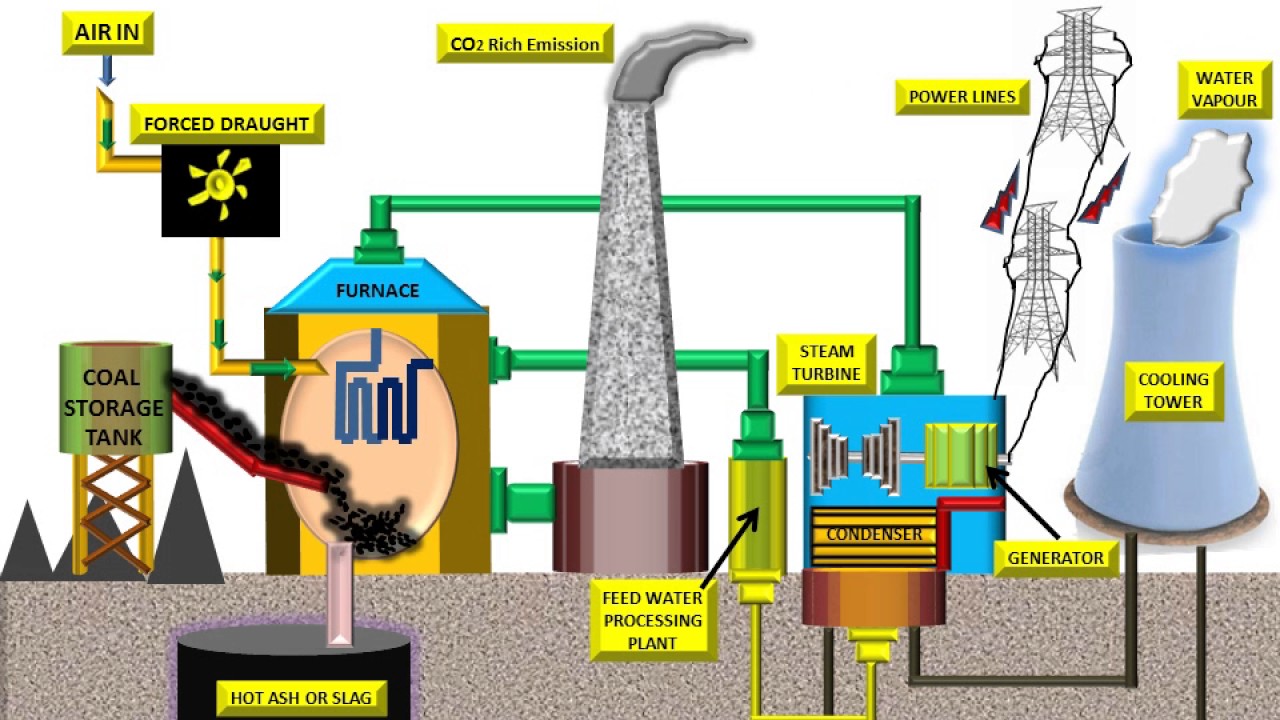
Thermal Power Plant What is thermal power plant ,and working of thermal power plant
This is known as ranking cycle. This article explains how electricity is generated in thermal power plants. As majority of thermal power plants use coal as their primary fuel, this article is focused on a coal fired thermal power plant. Typical layout and working of a Thermal Power Plant
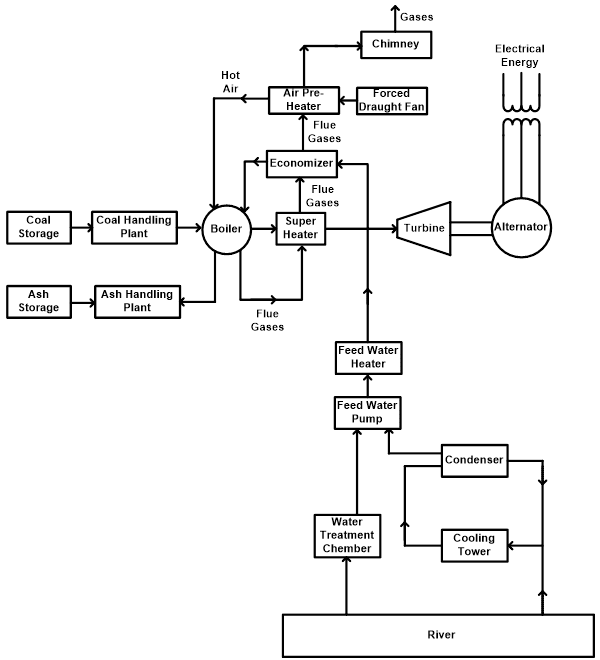
Thermal Power Plant Components, Working and Site Selection
A thermal power plant is a facility that transforms thermal energy into electrical energy. Thermal energy usually comes from burning fuel, but there are also thermal power plants that can operate on geothermal and solar energy.
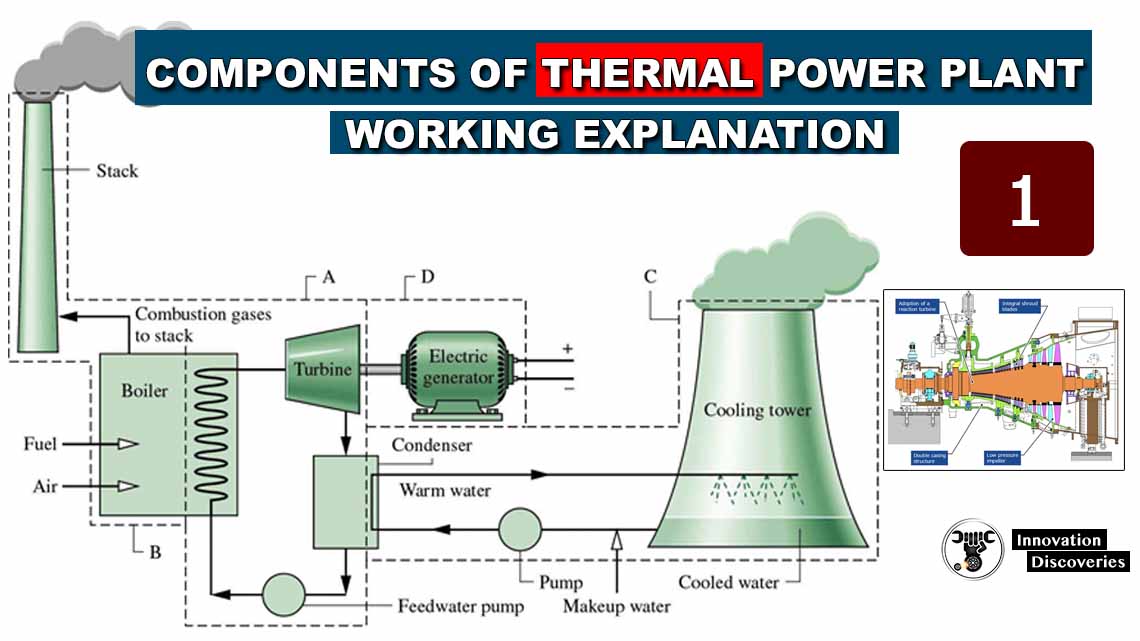
Components of Thermal Power Plant & Working Explanation
Basic Layout of Thermal Power Plant Components of Thermal Power Plant (1). Coal Storage and Pulverizer: (2). Water Boiler: (3). Steam Turbine: (4). Condenser : (4). Alternator: (6). Feed Water Pump: (7). Chimney: Working of Thermal Power Plant Advantages of Thermal Power Plant Disadvantages of Thermal Power Plant Conclusion

How a Thermal Power Plant Works?
Thermal Power Plant is an electric producing power plant in which fuel (such as coal, liquefied fuel, uranium, and natural resources) is used to generate heat and that heat is further utilized to heat the water to make steam and that steam is used to rotate the turbine and further electricity generates with the help of 3 phase supply generator.
Thermal Power Plant Components & Working Principles Thermodyne Boilers
A thermal power plant is a power generation station that converts the heat energy produced by the combustion of fuel into electric energy. The heat energy of the fuel is used to convert water into steam at high pressure. This high-pressure steam is passed over the turbine.
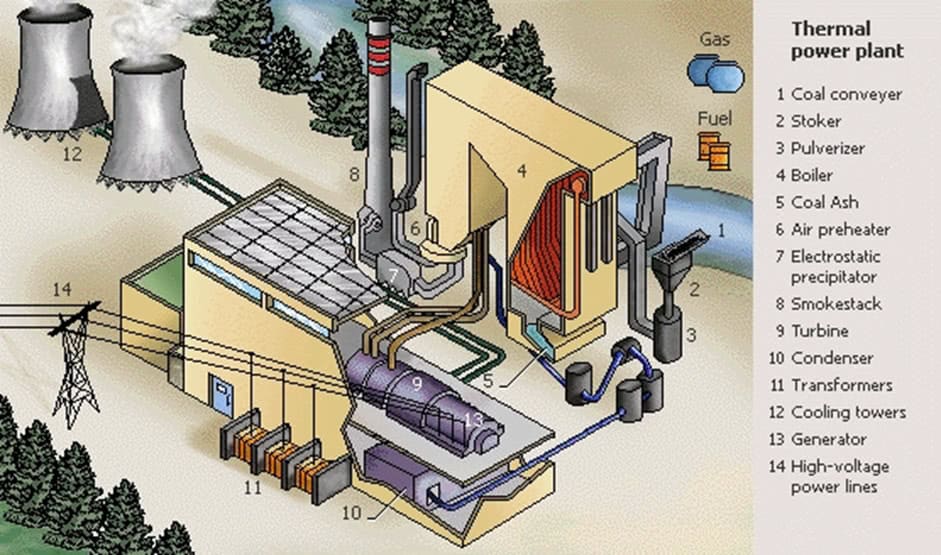
Thermal Power Plants Components & Working Principle EE Power School
The overall efficiency of the power plant is defined as the ratio of heat equivalent of electrical output to the heat of combustion (about 29%). The losses that occurred in the thermal power plant at various stages are as follows. Boiler House Losses: (a) To dry flue gases 5%. (b) To moisture in gases 5%.

Basic Layout and Working of a Thermal Power Plant
Thermal Power Plant Layout Steam power plant simply involves the conversion of heat energy into electrical energy. The method of arrangement can be divided into the following stages, Coal and ash handling arrangement Thermal power generation Generating plant Steam turbine Alternator Feed water Cooling arrangement Coal and Ash Handling Plant
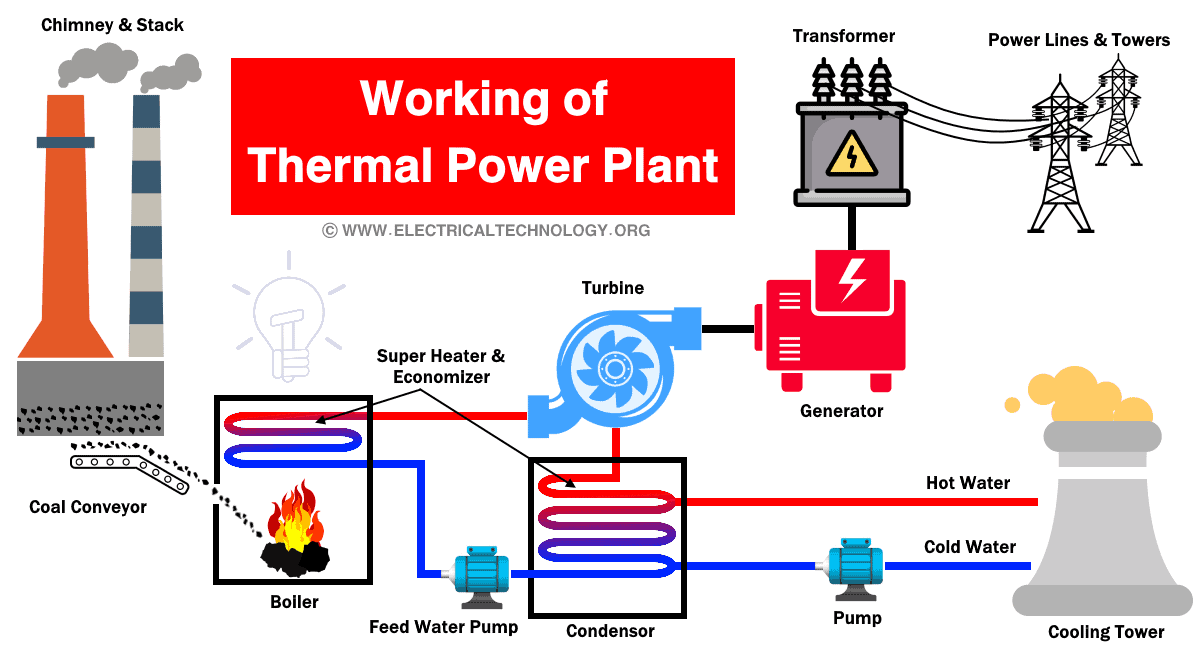
Thermal Power Plant Components, Working and Site Selection
Table of Contents What is a Thermal Power Plant? Working of Thermal Power Plant Components of Thermal Power Plant Site Selection of Thermal Power Plant Efficiency of Thermal Power Plant Advantages & Disadvantages of Thermal Power Plant What is a Thermal Power Plant? According to energy conservation law, energy is neither created nor destroyed.

Typical layout of CFBC based thermal power plant. Download Scientific Diagram
Thermal Power Plant. In the 18 th century, the Thermal Power Plant exists with a lot of improvements in the reciprocating steam engine (This reciprocating steam engine is used to develop the steam and with the use of an electric generator produces the electricity).In the year about 1905, the turbines entirely replaced reciprocating engines in large central power stations and continues the.
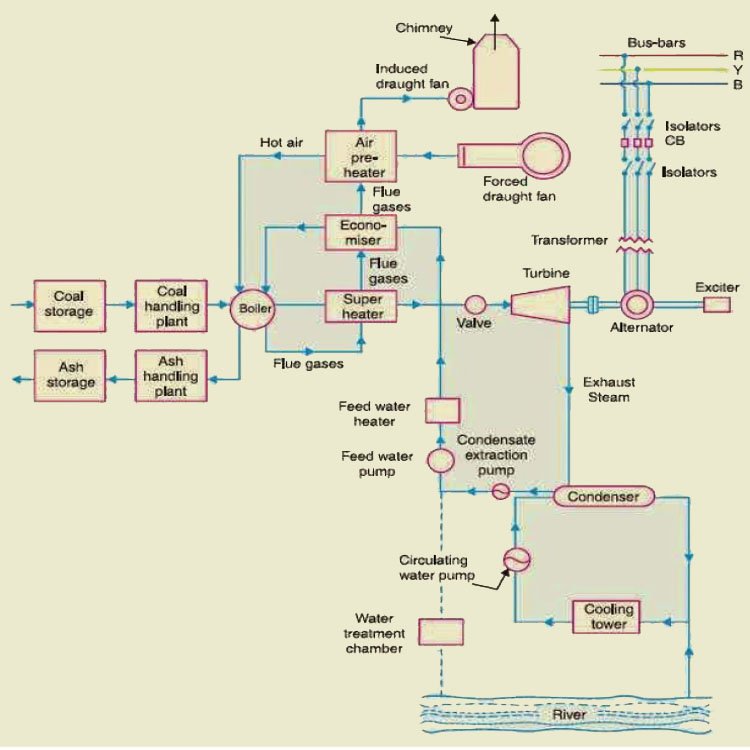
What is Thermal Power Plant? Layout, Working and Operation
Thermal Power Plant: Design and Operation deals with various aspects of a thermal power plant, providing a new dimension to the subject, with focus on operating practices and troubleshooting, as well as technology and design. Its author has a 40-long association with thermal power plants in design as well as field engineering, sharing his.

How does a Thermal power plant work? YouTube
1.4 General Layout of Modern Thermal Power Plant The general layout of the thermal power plant consists of mainly 4 circuits as shown in Fig. The four main circuits are: 1) Coal and ash handling circuit: In this circuit ,the coal from the storage is fed to the boiler through coal handling equipment for the generation of steam.